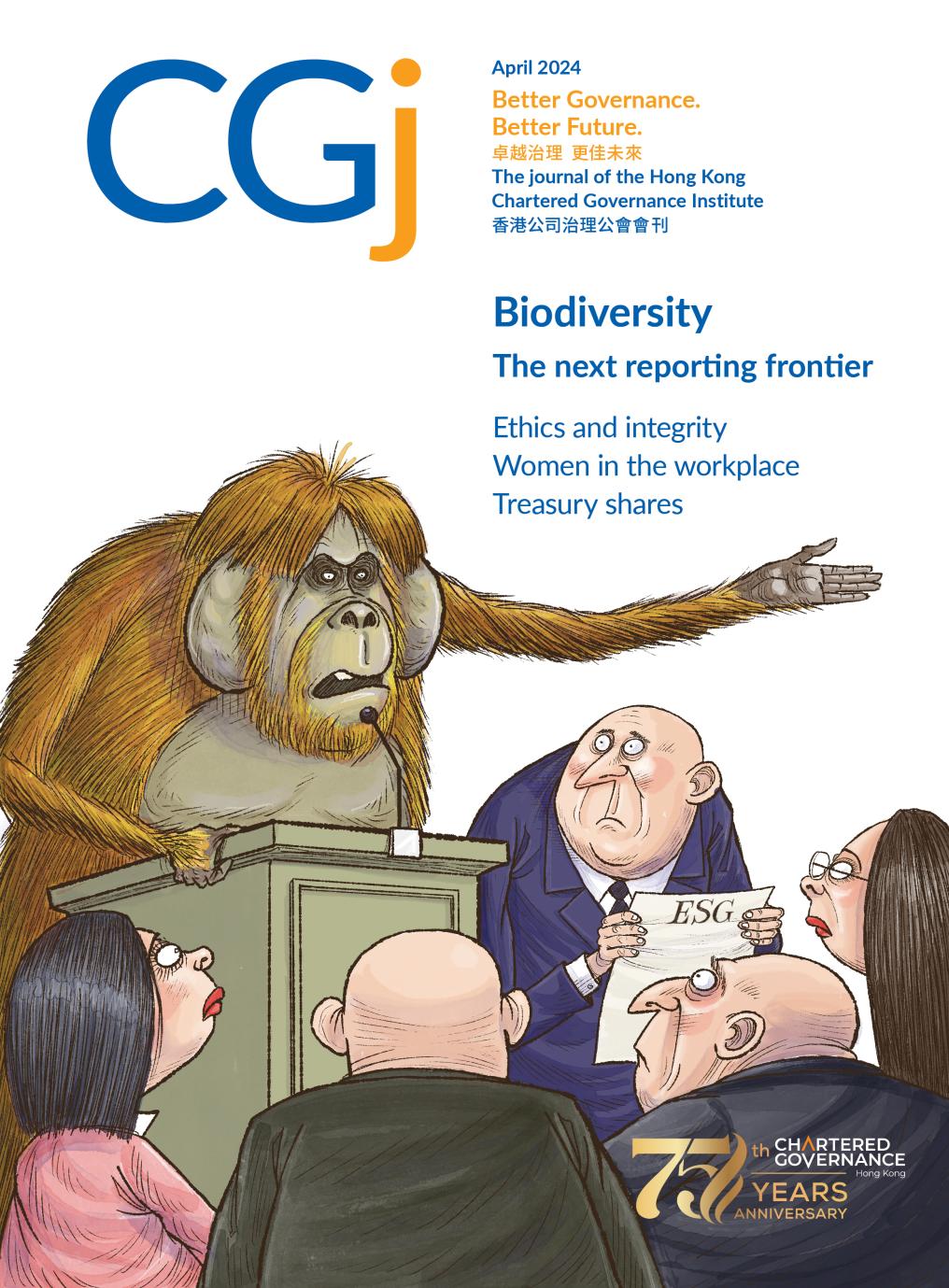Nicole Yuen, Founder and CEO, Women Workplace Index, discusses the disproportionately low rate of female representation in decision-making roles, particularly in Asia, and the need for employers to help redress the imbalance by supporting women to have both a career and a family.
Highlights
- representation of women in decision-making corporate roles in the developed West is less than 30%, and only between 5% and 15% in Asia
- women often face the dilemma of either giving birth or pursuing a career, and are poorly supported in the workplace should they want to do both
- the increasing numbers of women choosing to establish a career rather than having a family is contributing to a worrying decline in the global fertility rate and is a threat to the sustainability of humanity
Have you ever wondered how many women and men there are in the world? According to the United Nations Department of Economic and Social Affairs, as of 2023, there are 4.00 billion women and 4.04 billion men in the world, representing 49.75% and 50.25%, respectively. Thus, our population comprises roughly 50% women and 50% men. Against this background, have you considered what the representation of women is in decision-making roles in the world?
Using corporate management positions as the benchmark, a recent survey conducted by the investment bank Credit Suisse shows that less than 30% of decision-making roles are held by women in the developed West. Given the abundance of domestic help available for childcare and household chores in Asian countries, one might assume that female representation in management roles in Asia would be higher. Unfortunately, the reality is quite the opposite. Representation of women in decision-making corporate roles in Asia is even lower, ranging from only 5% to 15%.
Challenges to women’s representation in the workplace
The fact of the matter is that, in this day and age, female representation in the workplace worldwide still remains disproportionately low. Despite the fervent attention now being paid to environmental, social and governance (ESG) and diversity, equity and inclusion (DEI), the issue of women in the workplace remains a poorly researched topic and is very often overlooked. The situation is particularly acute in Asia. Much more still needs to be done.
As such, women have been calling for changes in the workplace since World War II, under the familiar but very often misunderstood banner of ‘women’s empowerment’. More recently, their calls have been conveniently subsumed under the general umbrella of gender equity or DEI and, particularly of late, within the social component of ESG.
Despite all these cries for help over the last few decades, there has been little change. There are still a multitude of pain points confronting women that stand in the way of enhancing their representation in the workplace. Sexual harassment, unconscious bias, cultural beliefs, family and career dilemmas, the glass ceiling, unequal pay and the old boys’network, to name but a few, are the challenges facing women in getting their voices heard and their influence felt in the workplace.
there are still a multitude of pain points confronting women that stand in the way of enhancing their representation in the workplace
The role of sustaining humanity
Indeed, it is most unfortunate that calls for women’s empowerment have now become synonymous with setting quotas, or have been reduced to merely counting the number of women on boards. Increasingly, corporate leaders – female executives included – have become jaded or disenchanted with the idea of activism for women’s empowerment. In particular, the detractors often regard women’s empowerment causes as being in conflict with the notion of meritocracy, claiming that women’s ability to get up the ladder on their own has been underestimated.
The primary reason for this misguided concept of women’s empowerment activism is that women have traditionally approached their demand for changes in the workplace from a victim’s perspective, as if to ask the world at large to give them redress for the ‘wrongs’ that have been imposed on them.
On the contrary, in this context there have been no wrongs done to women. It is just that the world has changed – but we have not yet come to sufficiently value the role the modern woman plays in it. What women, and indeed our current generations of men and women alike, have failed to recognise is that women have the ability to make a vital contribution to humanity, which is that of procreation. Without women, there would be no procreation and humanity would not be sustained. The simple truth is that women may well flourish in their career and be the economic support of the family, as many more are doing these days, but men will never be able to take over the role of procreation.
This fact, however, is seldom fully appreciated, and women have been poorly supported in this essential and irreplaceable role.
A decrease in the global fertility rate
The majority of the pain points confronting women in the workplace stem from the dilemma of giving birth and being the primary caregiver in the family on the one hand, versus pursuing a career on the other hand.
The traditional, and for a long time the only, relief provided to women after giving birth has been a limited and usually meagre period of maternity leave. This is a far cry from being a proper ‘compensation’ for bringing a life into the world. Despite some changes over time, the truth of the matter is that the current state of our workplace is still not conducive for women who straddle both family and career. The stark but inevitable consequence is that women have now decided, knowingly or unknowingly, to launch what is called the ‘ultimate revolution of humanity’. More and more often, women of the younger generations are now leaning further away from having a family, or are at least delaying doing so.
As per World Bank research: ‘Three main factors have been credited for a decrease in the global fertility rate: fewer deaths in childhood, greater access to contraception, and more women are getting an education and seeking to establish their careers before – and sometimes instead of – having a family.’
In this connection, it is interesting to note that while we have been constantly reminded of the threat of population explosion, very few of us have bothered looking into the fine print. The disparity between birth rate and population growth in certain areas of the world is indeed alarming, with birth rates far exceeding the replacement level in some countries (mostly in Africa and Latin America). However, in other parts of the world, especially the developed West and Asia, birth rates are falling, the population is aging and societies are dwindling – and this has been going on for a long time. The global average fertility rate has halved over the last 50 years.
Indeed, the situation has become so acute in Asia that, apart from Indonesia and the Philippines, virtually all countries in Asia surveyed by the World Bank are recording birth rates below the replacement rate – the rate that is considered necessary to sustain the continuation of a society – with some rates even falling under the half-way mark. This implies that most Asian societies are no longer sustainable. If timely changes are not made before it is too late, Asian communities and societies will no longer be able to survive.
the current state of our workplace is still not conducive for women who straddle both family and career
Conclusion
‘Change the system or change the women?’ This is the urgent question we need to ask ourselves. Do we want to change our workplace culture to one that supports women in achieving equilibrium between family and work, or do we want our workplaces to continue changing women by enforcing the cobwebbed dilemma of ‘one-or-the-other’?
We have to realise that what is at stake here goes far beyond just the traditional call for women’s empowerment or the pursuit of the good-to-have ideals of DEI. A far more fundamental notion is involved, which is that of the sustainability of humanity. Without a flourishing, diverse source for humanity, the sustainability of our environment – which all of us have become so preoccupied with – seems pointless.
Apart from our childhood years, which we generally spend at home, and our teenage years, which are mostly spent at school, the bulk of our life is dedicated to our employers and the workplace. If we are to effect change, the most important stakeholder in this change is the employer. It is high time that employers are made aware of their social responsibilities, not only in caring for the environment, but also in the sustainability of humanity by changing the workplace landscape to support women in achieving an equilibrium that sustains our future.
Nicole Yuen, Founder and CEO
Women Workplace Index
The Woman Workplace Index (WWI) is the first and only certification regime dedicated to the women’s workplace policies and practices of listed companies and other employers in Asia. Launched in March 2024, WWI will host the largest publicly available database of employers’ disclosures on women’s workplace policies and practices in Asia, starting in Hong Kong. Its objectives are to raise awareness, encourage tracking and accelerate changes via sharing best practices. It has been set up to help employers in their journey of tracking and disclosing their women’s workplace practices, as well as to recognise and showcase their progress from year to year. The certification regime is open for participation by all employers in Asia. The Equal Opportunities Commission is WWI’s supporting organisation and The Hong Kong University of Science and Technology is its academic partner.



